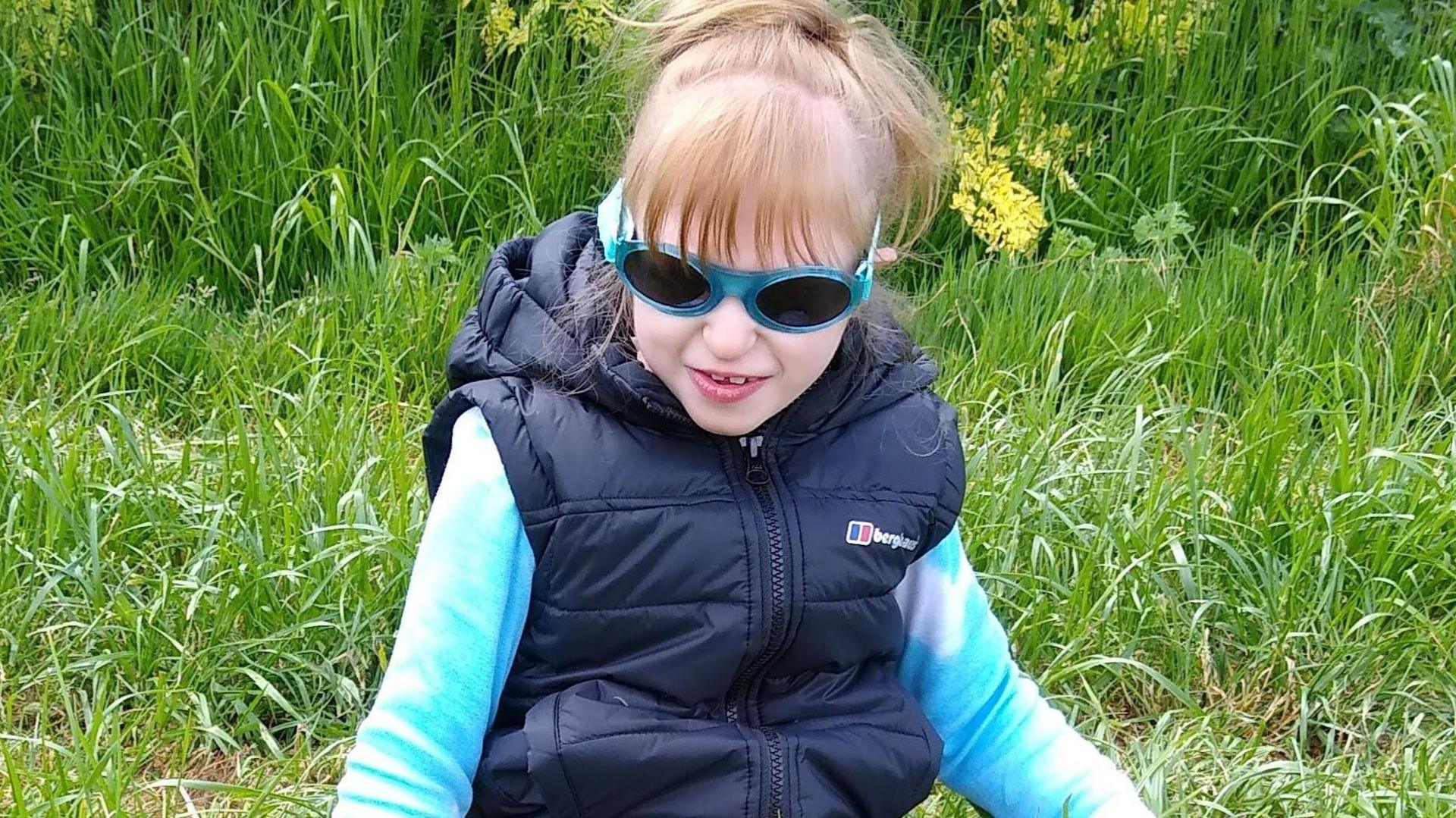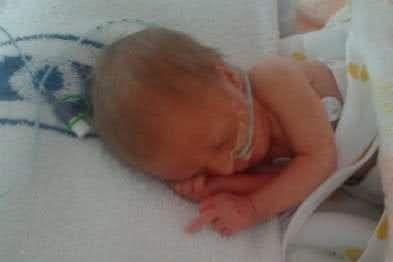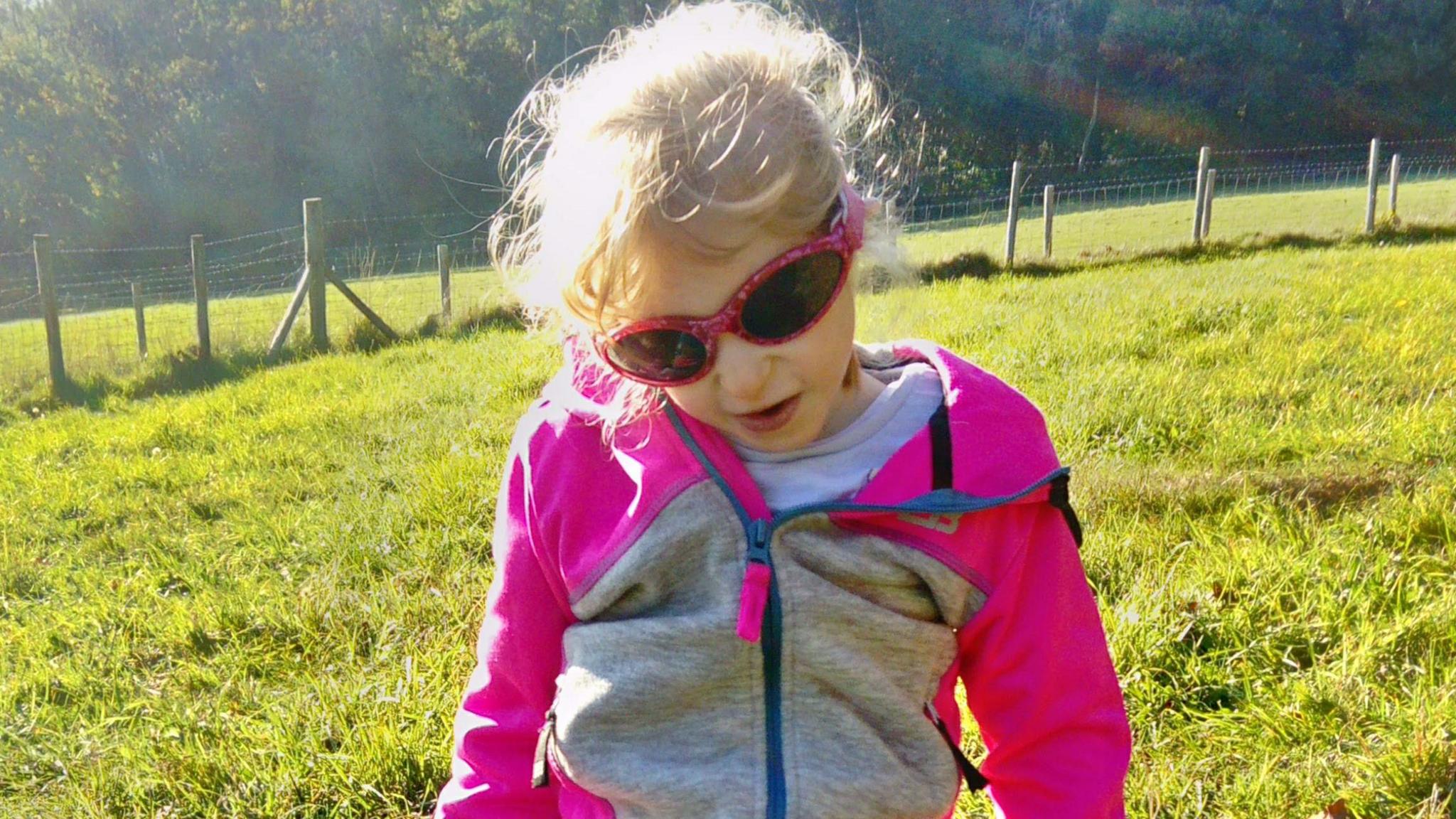Girl’s life saved by pioneering rare diseases study

- Published
The family of a young girl say her life was saved after a pioneering study was able to diagnose her incredibly rare genetic disorder, leading to better treatment.
Jaydi Hawker, 11, has a form of dwarfism thought to affect fewer than 50 people in the world.
There are thousands of such genetic disorders and, collectively, they affect one in 17 people in the UK.
Jaydi was part of a study pushing the limits of genetic analysis to get families a diagnosis.
The disorders are caused by mutations in our DNA, which damage crucial instructions for how our bodies should work.
Parents and doctors will spot something wrong with a child’s development but discovering the cause - the specific mutation in our entire genetic code - is often elusive.
Jaydi’s mum Lisa Hawker says she first knew something was wrong when a pregnancy anomaly scan highlighted unusual brain development.
Jaydi was born at 31 weeks, weighing just 2lbs (0.9kg) and continued to grow and develop slowly.
“She was so tiny, smaller than a doll, even dolls' clothes were too big,” says the single mum from Seaton, in Devon.
Jaydi left hospital only a week before her first birthday.

Jaydi was fed via a nasogastric tube to provide food and liquid into her stomach
"She just wasn’t putting on weight despite having tube feeds, extra calories, and also her development was delayed and we just didn’t know what was going on," says Dr Emma Kivuva, clinical geneticist at the Royal Devon University Healthcare NHS Foundation Trust.
A genetic disorder was suspected but no amount of testing confirmed it.
Lisa says: “It was not knowing why she wasn’t growing, why her head was so little.
“It was really stressful, I blamed myself, did I do something wrong? Did I not eat enough or drink enough or wait too long in life? And just driving yourself crazy not knowing.”
When Jaydi was nearly one, Dr Kivuva offered a place on the Deciphering Developmental Disorders study.
The largest ever study of children with genetic disorders, it is a collaboration between the NHS, universities and the Sanger Institute, which specialises in analysing DNA.
Years later it would provide answers but initially Lisa and Jaydi had to navigate the uncertainties of an unknown condition.
“She’d been in hospital for so long she didn’t even know I was her mum, she’d been handled by so many nurses for so long," says Lisa, who even tried playing hospital sounds to soothe her daughter.
Jaydi learned to walk and started nursery but she is non-verbal and has problems seeing and hearing.
Lisa says at one point "the whole side of her face had collapsed" and doctors thought she would need major reconstructive surgery to relieve pressure on her brain. Blood and bone marrow tests showed Jaydi's blood was thin like water.
“Every day was like living with a ticking timebomb,” says Lisa.

Answers came when Jaydi was four years old.
The detailed analysis of her DNA found she had lig-4 syndrome. It is caused by a mutation that affects the body’s ability to repair DNA damage and had only been documented a handful of times before.
“The penny dropped, it all made sense,” says Lisa.
The diagnosis connected the primordial dwarfism, the development delays and what was happening in her blood.
For Lisa, the diagnosis ended years of searching for an answer. For clinicians, it meant they could compare Jaydi’s notes with other cases of lig4 from around the world.
“As doctors, particularly at a time we were trying to understand her bone marrow tests, it meant we had an explanation and knew what to do about it,” said Dr Kivuva.
Children with lig-4 syndrome were at an increased risk of aggressive and hard to treat leukaemia.
Rather than wait for that to happen, Lisa and doctors agreed an immediate bone marrow transplant could save Jaydi's life.
It involved Jaydi and Lisa staying in a sterile room for six months because of the risk of infection but Lisa says it was worth it.
She says: "The bloods are all back to normal, she’s back to school, she’s running round like a crazy child and she’s really happy and healthy at the moment.
"I think if we hadn’t got that diagnosis it would have been too late… it saved Jaydi’s life."
She says Jaydi is full of energy, loves singing and dancing and is currently going through a fake nails phase.

Lisa and Jaydi are among 13,500 families that have taken part in the Deciphering Developmental Disorders study.
Previous analysis showed it identified 60 new genetic diseases and gave 5,500 families a diagnosis for the first time.
Thousands get diagnosis after 60 new diseases found
- Published13 April 2023
The latest study, led by the University of Exeter and the Royal Devon University Healthcare NHS Foundation Trust, looked at whether getting a diagnosis made a difference.
The results, published in the journal Genetics in Medicine Open, external, found:
76% of families were given specific information about their condition
in 28% of families, the diagnosis changed how the disorder was clinically managed
in 3% of cases, including Jaydi’s, it led to specific new therapies such as seizure-medications or dietary supplements to manage the condition
21% of families were now part of support groups
29% of families had advice about the risks if they chose to have another child
Professor of Genomic Medicine at the University of Exeter, Caroline Wright, said: “It’s so gratifying to hear stories like Jaydi’s, where a genetic diagnosis really is life-changing.”
Whole genome sequencing for affected families is now offered on the NHS and a new study is offering screening for 200 genetic disorders by testing the umbilical cord.
Prof Wright said it would lead to more families being diagnosed as early as possible and that more disorders would be treatable in future.
“There are quite a lot of genetically targeted therapies in development and in clinical trials, so I think the number of treatments that will be personalised to individuals will increase a lot," she said.
The long-term future for Jaydi is uncertain. The lig-4 syndrome could increase the risk of tumours in other parts of her body.
“We hope we’ve given her a better quality of life and a longer life,” said Dr Kivuva.
Sarah Wynn, chief executive of charity Unique, which supports families affected by rare genetic disorders, said: “This study has provided so many families with an explanation for their child’s developmental delay.
"Many of these families have waited a long time to get this answer and they are now able to better understand their child and their needs."
Inside Health was produced by Tom Bonnett